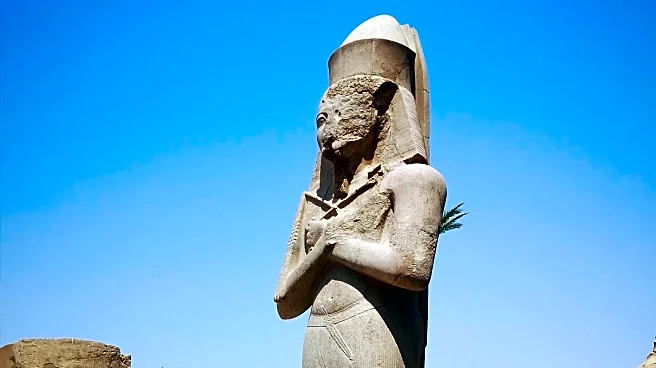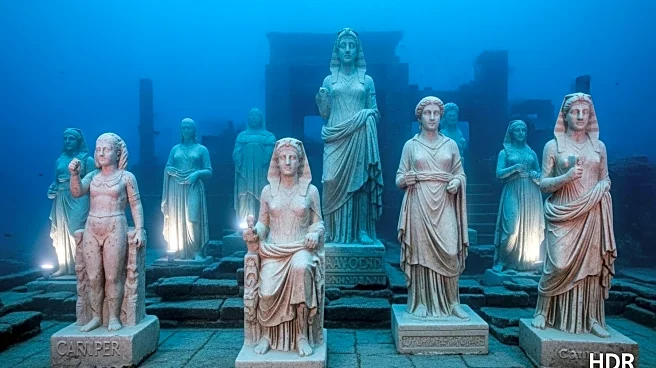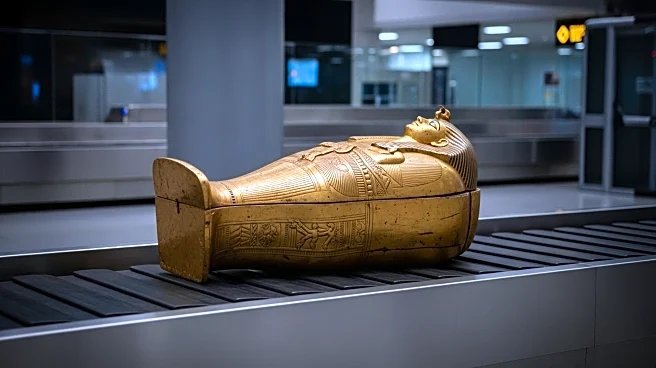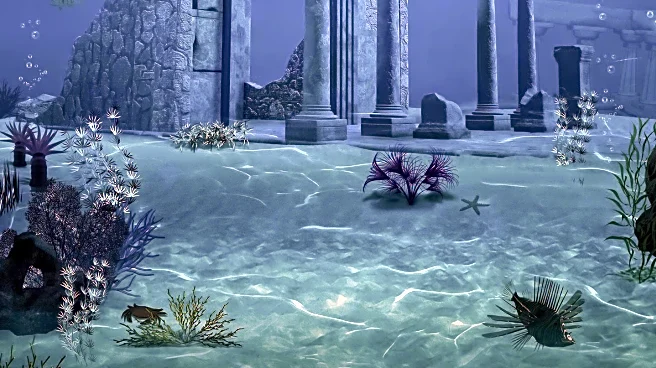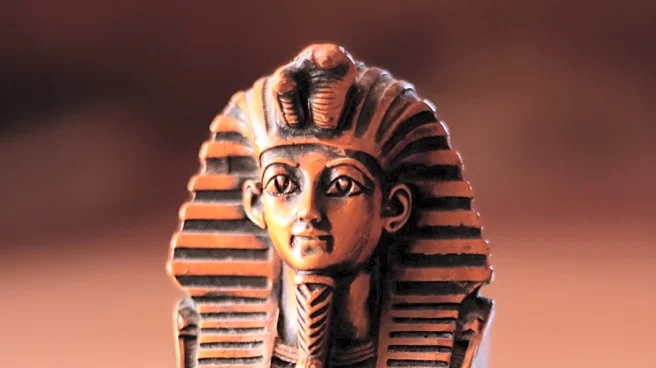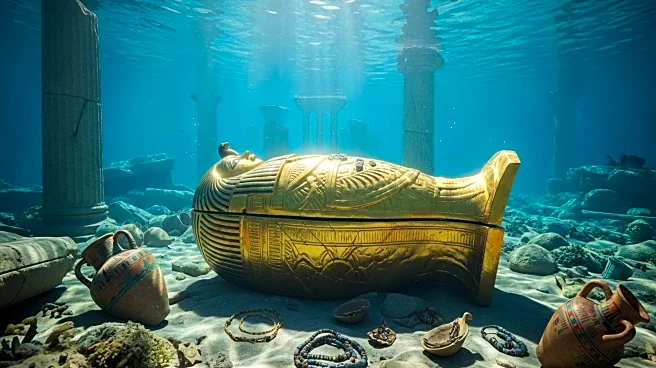What is the story about?
What's Happening?
Egypt has successfully recovered 2,000-year-old statues from the sunken city of Canopus, located off the coast of Alexandria. This archaeological effort, led by Egypt's tourism and antiquities minister Sherif Fathy, marks a significant milestone in preserving the nation's cultural heritage. The recovery included monumental statues such as a giant quartz sphinx with carved tablets of Ramesses II, a granite statue from the late Ptolemaic era, and the lower half of a Roman nobleman carved from white marble. Canopus was a major economic and military hub during the Ptolemaic dynasty and Roman occupation, but it was submerged due to earthquakes and rising sea levels by the 8th century. The recent excavations, Egypt's first underwater operations in 25 years, also uncovered limestone buildings, reservoirs, and ponds used for fish cultivation.
Why It's Important?
The recovery of these ancient artifacts is crucial for understanding Egypt's historical trade and cultural dynamics. The discoveries provide insights into the architectural and economic practices of ancient Canopus, enhancing the historical narrative of Egypt's Mediterranean trade routes. This effort underscores the importance of preserving cultural heritage, which can boost tourism and national pride. The artifacts, now part of an exhibition at the Alexandria National Museum, could attract international attention and tourism, contributing to Egypt's economy. The potential creation of an underwater museum would further solidify Egypt's status as a leader in cultural preservation.
What's Next?
Egyptian authorities are considering the establishment of the world's first underwater museum to showcase these artifacts, which would be a groundbreaking development in cultural tourism. This initiative could lead to increased international collaboration in marine archaeology and further exploration of submerged sites. The ongoing exhibition at the Alexandria National Museum will continue to draw visitors, potentially leading to more investments in cultural and archaeological projects. The preservation efforts may also inspire similar initiatives in other countries with submerged heritage sites.
Beyond the Headlines
The recovery of Canopus's artifacts highlights the ethical considerations in archaeology, such as the balance between preservation and public access. The idea of an underwater museum raises questions about accessibility and the technological challenges of displaying artifacts in their original submerged context. This development could influence global cultural policies, encouraging nations to invest in innovative preservation methods. Additionally, the focus on underwater heritage may shift cultural tourism trends towards more immersive and educational experiences.
AI Generated Content
Do you find this article useful?
